
The Enchanted Loire Valley: France's Timeless Treasure
Discover the Loire Valley, a UNESCO World Heritage site in France, renowned for its majestic châteaux, exquisite wines, and picturesque villages that capture the essence of French elegance.
The Loire Valley, often called the 'Garden of France,' is a stunning region filled with lush vineyards, grand châteaux, and charming villages. Nestled in the heart of France, this UNESCO World Heritage site is a haven for history lovers and wine enthusiasts. Stretching along the majestic Loire River, the valley is home to more than 300 châteaux, each with its unique story and architectural style. From the fairy-tale castle of Château de Chambord to the elegant gardens of Château de Villandry, every corner of the Loire Valley exudes a sense of timeless beauty. Explore the picturesque towns of Amboise, Blois, and Tours, where cobbled streets and half-timbered houses transport you back in time. These towns are not just beautiful, but also rich in history, having been favored by French royalty for centuries. Visit the final resting place of Leonardo da Vinci at Château du Clos Lucé, and marvel at the innovative designs that made him a Renaissance genius. The Loire Valley is also famed for its exceptional wines. The region's vineyards produce some of the finest wines in the world, including crisp Sauvignon Blancs and robust Cabernet Francs. Take a leisurely bike ride through the scenic vineyards, stopping for tastings at local wineries. Pair your wine with delicious regional cuisine, featuring fresh produce, goat cheese, and river fish, making your visit a feast for the senses. Lastly, the Loire Valley's natural beauty is unparalleled. The rolling hills, verdant forests, and serene riverscapes offer endless opportunities for outdoor activities. Whether you enjoy hiking, boating, or simply relaxing in a tranquil garden, the Loire Valley provides a perfect escape into nature's embrace.
Local tips in Loire Valley
- Visit in late spring or early autumn to enjoy pleasant weather and fewer crowds.
- Rent a bike to explore the vineyards and châteaux at your own pace.
- Book château tours in advance, especially for popular sites like Château de Chambord.
- Try local specialties like goat cheese (Crottin de Chavignol) and river fish (Sandre).
- Take a boat ride on the Loire River for a unique perspective of the valley.
The Enchanted Loire Valley: France's Timeless Treasure
The Loire Valley, often called the 'Garden of France,' is a stunning region filled with lush vineyards, grand châteaux, and charming villages. Nestled in the heart of France, this UNESCO World Heritage site is a haven for history lovers and wine enthusiasts. Stretching along the majestic Loire River, the valley is home to more than 300 châteaux, each with its unique story and architectural style. From the fairy-tale castle of Château de Chambord to the elegant gardens of Château de Villandry, every corner of the Loire Valley exudes a sense of timeless beauty. Explore the picturesque towns of Amboise, Blois, and Tours, where cobbled streets and half-timbered houses transport you back in time. These towns are not just beautiful, but also rich in history, having been favored by French royalty for centuries. Visit the final resting place of Leonardo da Vinci at Château du Clos Lucé, and marvel at the innovative designs that made him a Renaissance genius. The Loire Valley is also famed for its exceptional wines. The region's vineyards produce some of the finest wines in the world, including crisp Sauvignon Blancs and robust Cabernet Francs. Take a leisurely bike ride through the scenic vineyards, stopping for tastings at local wineries. Pair your wine with delicious regional cuisine, featuring fresh produce, goat cheese, and river fish, making your visit a feast for the senses. Lastly, the Loire Valley's natural beauty is unparalleled. The rolling hills, verdant forests, and serene riverscapes offer endless opportunities for outdoor activities. Whether you enjoy hiking, boating, or simply relaxing in a tranquil garden, the Loire Valley provides a perfect escape into nature's embrace.
When is the best time to go to Loire Valley?
Iconic landmarks you can’t miss
Château de Chambord
Discover the grandeur of Château de Chambord, an architectural marvel in the heart of France's Loire Valley, steeped in history and natural beauty.

Château de Chenonceau
Explore the enchanting Château de Chenonceau, a stunning castle in the Loire Valley renowned for its rich history, beautiful gardens, and architectural elegance.

Château Royal d'Amboise
Experience the grandeur of Château Royal d'Amboise, a historic castle offering stunning views, rich heritage, and beautiful gardens in the heart of the Loire Valley.

Château du Clos Lucé
Explore the enchanting Château du Clos Lucé, the last residence of Leonardo da Vinci, where art, history, and nature converge in beautiful Amboise.

Royal Château of Blois
Explore the Royal Château of Blois, a stunning blend of Gothic and Renaissance architecture, steeped in history and surrounded by beautiful gardens.

Château de Cheverny
Discover the enchanting Château de Cheverny, a historical gem in the Loire Valley, renowned for its stunning architecture and lush gardens.

Château de Villandry
Explore the stunning Château de Villandry, a Renaissance castle in the Loire Valley with breathtaking gardens and rich historical significance.

Château d'Azay-le-Rideau
Château d'Azay-le-Rideau: A Stunning Renaissance Castle in the Heart of France's Loire Valley, Perfect for History Lovers and Sightseers Alike.

Château de Saumur
Explore the rich history and stunning architecture of Château de Saumur, a captivating castle in the heart of the Loire Valley.

Château de Chaumont
Discover the enchanting Château de Chaumont, where history, art, and stunning gardens converge in the heart of the Loire Valley.

Château de Langeais
Discover the enchanting Château de Langeais, a historic castle and museum that brings French history to life amidst stunning architecture and beautiful gardens.

Domaine de Chaumont-sur-Loire
Explore the enchanting gardens and historic chateau of Domaine de Chaumont-sur-Loire, a breathtaking destination in the heart of France's Loire Valley.

Château de Meung-sur-Loire
Discover the captivating history and stunning architecture of Château de Meung-sur-Loire, a cultural landmark showcasing France's royal past.

Château du Rivau
Discover the captivating charm of Château du Rivau, a historical castle in the Loire Valley filled with art, lush gardens, and exquisite French cuisine.

Château de l'Islette
Experience the charm of Château de l'Islette, a stunning Renaissance castle surrounded by beautiful gardens in the heart of the Loire Valley.

Unmissable attractions to see
Château de Cheverny
Explore the majestic Château de Cheverny in the Loire Valley, a historical gem showcasing exquisite architecture, art, and stunning gardens.

Château d'Azay-le-Rideau
Discover the enchanting Château d'Azay-le-Rideau, a stunning Renaissance castle surrounded by beautiful gardens in the heart of the Loire Valley.

Château de Saumur
Explore the enchanting Château de Saumur, a majestic castle and museum offering stunning views and rich history in the heart of the Loire Valley.

Château de Sully-sur-Loire
Experience the charm and history of Château de Sully-sur-Loire, a magnificent Renaissance castle in the heart of the Loire Valley.

Château de Langeais
Explore the enchanting Château de Langeais, a stunning medieval castle in the heart of the Loire Valley, rich in history and breathtaking architecture.

Grand Aquarium de Touraine
Experience the enchanting marine life at the Grand Aquarium de Touraine, an exquisite destination for families and nature lovers in Lussault-sur-Loire.
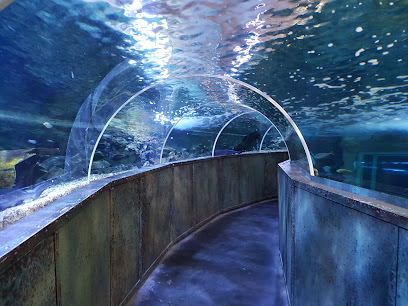
Mini Castle Park
Explore the enchanting Mini Castle Park in Amboise, where you can discover beautifully crafted miniature replicas of France’s most iconic castles.
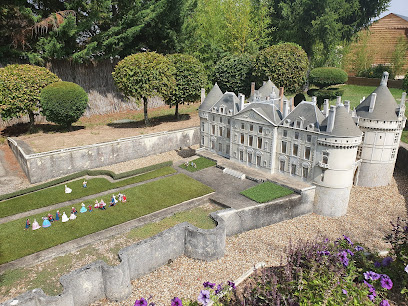
Château de Meung-sur-Loire
Discover the magical Château de Meung-sur-Loire, a stunning cultural landmark steeped in history and surrounded by beautiful gardens.

Château du Rivau
Experience the charm of Château du Rivau, where history, art, and gourmet dining converge in the heart of the Loire Valley.

Rochemenier Village Troglodytique
Experience the charm of Rochemenier Village Troglodytique, a historical landmark showcasing troglodytic dwellings and rich local culture in the heart of France.

Château de l'Islette
Discover the enchanting Château de l'Islette, a stunning castle in the Loire Valley rich in history and surrounded by beautiful gardens.

Cave of Goupillières
Explore the Cave of Goupillières in Azay-le-Rideau, a captivating troglodyte site that unveils the mysteries of ancient cave dwellings.

Château Gaillard
Explore the historical and natural beauty of Château Gaillard, a captivating castle in Amboise, France, featuring lush gardens and cultural events.
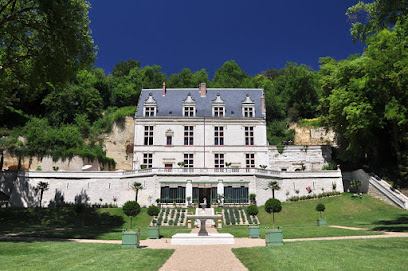
Blois Cathedral
Explore the enchanting Blois Cathedral, a stunning architectural gem in the heart of the Loire Valley, rich in history and serene beauty.

Château de Beauregard, Loire Valley
Experience the stunning beauty and rich history of Château de Beauregard in the heart of the Loire Valley, France's famed castle region.

Essential places to dine
Auberge Pom'Poire
Experience exquisite French cuisine at Auberge Pom'Poire in Azay-le-Rideau—a perfect blend of fine dining and cozy hospitality.

Auberge du Prieuré
Discover authentic French cuisine at Auberge du Prieuré in Amboise, where every dish tells a story of local tradition and flavor.

Restaurant le 36
Experience authentic French cuisine with stunning river views at Restaurant le 36 in Amboise – where every meal is a celebration.

Restaurant Le Château de Pray
Experience exquisite French cuisine and breathtaking views at Restaurant Le Château de Pray in Amboise.

Restaurant du Château de Rochecotte
Experience exquisite haute French cuisine at Restaurant du Château de Rochecotte in Coteaux-sur-Loire – a true culinary gem amidst stunning landscapes.

Markets, malls and hidden boutiques
Château de Chambord
Explore the grandeur of Château de Chambord, a UNESCO World Heritage site showcasing Renaissance architecture and stunning parklands in the Loire Valley.
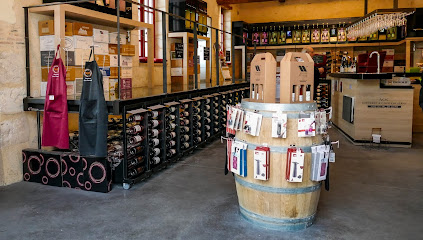
Musée du Champignon
Explore the enchanting world of mushrooms at the Musée du Champignon in Saumur, featuring over 1,000 species and interactive exhibits for all ages.

Tour de l'Horloge
Discover stunning views and rich history at the Tour de l'Horloge in Amboise, a must-see observation deck overlooking the Loire River.

Un Coin de France Sarl
Explore culinary treasures at Un Coin de France Sarl, a kitchen supply store in the heart of Amboise, offering quality tools for every chef.

Paleamy
Discover exquisite fashion accessories at Paleamy, where style meets elegance in a vibrant shopping experience.

Touraine Voyages
Explore the enchanting Loire Valley with Touraine Voyages, your expert travel agency in Amboise for personalized tours and unforgettable experiences.

La Tour d'Or Blanc de J.M. Othoniel
Explore La Tour d'Or Blanc de J.M. Othoniel, a captivating cultural landmark in Amboise, France, blending contemporary art with historical charm.

Lilas Boutique
Explore exquisite dresses and stylish accessories at Lilas Boutique, a must-visit for fashion enthusiasts seeking unique styles and elegance.

Cadogenio
Explore Cadogenio, a unique gift shop offering a delightful range of toys, trinkets, and local souvenirs for every traveler’s taste.

Cérès
Discover Cérès, the ultimate destination for exquisite handbags and leather goods in France, where craftsmanship meets contemporary style.
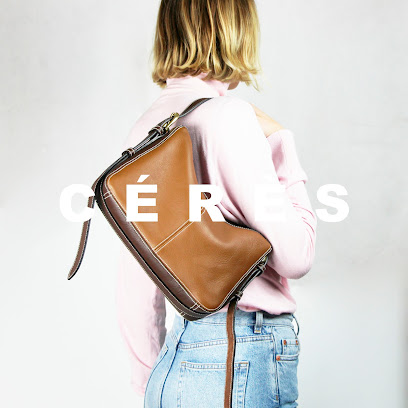
A Bonne Essence
Discover the enchanting world of fragrances at A Bonne Essence, a perfume store where scent meets artistry in a vibrant shopping atmosphere.

The High Heel Shop
Discover exquisite high heels and personalized service at The High Heel Shop, a premier destination for fashionable footwear lovers.

La ronde des rêves
Discover unique souvenirs and local treasures at La Ronde des Rêves, a charming gift shop that captures the spirit of the region.

Royal Loire Valley
Explore the Royal Loire Valley: A breathtaking journey through history, stunning châteaux, and picturesque landscapes in the heart of France.

Centre Commercial Shop'in Mundo'
Discover the vibrant fashion scene at Centre Commercial Shop'in Mundo' in La Celle-sous-Gouzon, where style meets comfort for every shopper.

Essential bars & hidden hideouts
Bar Le Corsaire
Experience the vibrant nightlife of Tours at Bar Le Corsaire, where nautical charm meets delicious cocktails.

Le Shaker
Experience the best of tapas and local wines at Le Shaker in Amboise, where culinary delights meet a charming riverside atmosphere.

Sauvage
Discover the charm of Sauvage, a delightful wine bar in Chargé, offering exquisite wines and delicious deli fare in a cozy atmosphere.

Bar Café Chaud
Experience the vibrant nightlife of Tours at Bar Café Chaud, where cocktails, jazz, and dancing create unforgettable memories.

The Winchester
Experience the vibrant nightlife of The Winchester in Tours, where cocktails, music, and great company come together for an unforgettable evening.

ART IS AN ALE BREWING Taproom
Discover the vibrant craft beer culture at Art Is An Ale Brewing Taproom in Amboise, where every sip tells a story of artistry and passion.

Bistrot L'Atelier
Experience the essence of French culture at Bistrot L'Atelier, a charming wine bar in Amboise offering exquisite local wines and delightful cuisine.

Le Royal
Discover the charm of Amboise at Le Royal, an affordable Bar PMU where local culture and vibrant atmosphere await you.

Le Vieux Château bar/brasserie/terrasse
Discover Le Vieux Château, a charming bar and café in Tours offering delectable cuisine and refreshing drinks amidst a welcoming atmosphere.
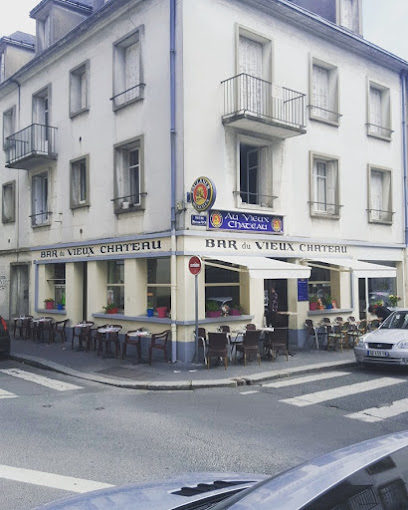
Le lamantin qui guinche
Enjoy live music and delicious snacks at Le Lamantin Qui Guinche, the vibrant bar in Chaumont-sur-Loire for an unforgettable night out.

Eden Bar
Experience the charm of Reugny at Eden Bar, where authentic French cuisine meets a welcoming atmosphere in a delightful setting.

Le Bergerac
Explore the charm of Veuzain-sur-Loire at Le Bergerac, where delightful cuisine and a warm atmosphere await every visitor.

Crêperie Bar Cocktails La Cour
Experience authentic French crêpes and cocktails in the heart of Tours, France, at Crêperie Bar Cocktails La Cour - a must-visit for food lovers!

Bar L’entre potes
Experience the charm of Montlouis-sur-Loire at Bar L’entre potes, where a diverse selection of beers meets a warm, inviting atmosphere.

Le Captain's
Discover Le Captain's: the ideal bar in Saint-Ouen-les-Vignes for refreshing drinks, local flavors, and a warm, welcoming atmosphere.

Local Phrases about Loire Valley
-
- HelloBonjour
[bohn-zhoor] - GoodbyeAu revoir
[oh ruh-vwahr] - YesOui
[wee] - NoNon
[nohn] - Please/You're welcomeS'il vous plaît/De rien
[seel voo pleh/dee ryen] - Thank youMerci
[mehr-see] - Excuse me/SorryExcusez-moi/Désolé
[ehk-skyoo-zay mwah/deh-zoh-lay] - How are you?Comment ça va?
[koh-mohn sah vah] - Fine. And you?Bien. Et vous?
[byen. ay voo] - Do you speak English?Parlez-vous anglais?
[pahr-lay voo ahn-glay] - I don't understandJe ne comprends pas
[zhuh nuh kohm-prahnd pah]
- HelloBonjour
-
- I'd like to see the menu, pleaseJe voudrais voir la carte, s'il vous plaît
[zhuh voo-dray vwahr lah kart, seel voo pleh] - I don't eat meatJe ne mange pas de viande
[zhuh nuh mahnzh pah duh vyahnd] - Cheers!Santé!
[sahn-tay] - I would like to pay, pleaseJe voudrais payer, s'il vous plaît
[zhuh voo-dray pay-yay, seel voo pleh]
- I'd like to see the menu, pleaseJe voudrais voir la carte, s'il vous plaît
-
- Help!Au secours!
[oh sey-koor] - Go away!Allez-vous en!
[ah-lay vooz ahn] - Call the Police!Appelez la police!
[ah-peh-lay lah poh-lees] - Call a doctor!Appelez un médecin!
[ah-peh-lay uh may-deh-sahn] - I'm lostJe suis perdu
[zhuh swee pehr-doo] - I'm illJe suis malade
[zhuh swee mah-lahd]
- Help!Au secours!
-
- I'd like to buy...Je voudrais acheter...
[zhuh voo-dray zheh-tay...] - I'm just lookingJe regarde juste
[zhuh ruh-gahrd zhewst] - How much is it?Combien ça coûte?
[kohm-byen sah koot] - That's too expensiveC'est trop cher
[say troh shehr] - Can you lower the price?Pouvez-vous baisser le prix?
[poo-veh voo beh-say luh pree]
- I'd like to buy...Je voudrais acheter...
-
- What time is it?Quelle heure est-il?
[kell uhr eh-teel] - It's one o'clockIl est une heure
[eel eh tun uhr] - Half past (10)Dix heures et demie
[dees uhr ay duh-mee] - MorningMatin
[mah-tahn] - AfternoonAprès-midi
[ah-pray mee-dee] - EveningSoir
[swahr] - YesterdayHier
[yehr] - TodayAujourd'hui
[oh-zhoor-dwee] - TomorrowDemain
[duh-mahn] - 1Un
[uh] - 2Deux
[duh] - 3Trois
[trwah] - 4Quatre
[kah-truh] - 5Cinq
[sank] - 6Six
[sees] - 7Sept
[seht] - 8Huit
[weet] - 9Neuf
[nuff] - 10Dix
[dees]
- What time is it?Quelle heure est-il?
-
- Where's a/the...?Où est le/la...?
[oo eh luh/lah] - What's the address?Quelle est l'adresse?
[kell eh la-dress] - Can you show me (on the map)?Pouvez-vous me montrer (sur la carte)?
[poo-veh voo muh mohn-tray (soor lah kart)] - When's the next (bus)?Quand est le prochain (bus)?
[kahn eh luh proh-shahn (bus)] - A ticket (to ....)Un billet (pour ....)
[uhn bee-yay (poor)]
- Where's a/the...?Où est le/la...?
History of Loire Valley
-
The Loire Valley, known as the 'Garden of France', has a rich history that dates back to the Upper Paleolithic period. Archaeological sites such as the Grotte des Fadets reveal that early humans were attracted to this fertile land along the Loire River. The valley's strategic location and temperate climate made it an ideal place for settlement, agriculture, and trade.
-
During the Roman era, the Loire Valley became an important region for the Roman Empire. The city of Tours, known as Caesarodunum, served as a key administrative center. Roman roads, bridges, and aqueducts facilitated commerce and communication. The remnants of Roman amphitheaters and villas can still be seen today, offering a glimpse into the valley's ancient past.
-
The Middle Ages saw the Loire Valley flourish as a center of power and culture. The construction of grand châteaux, such as Château de Chinon and Château de Saumur, began during this period. These fortresses not only served as royal residences but also as symbols of feudal power and architectural innovation. The region became a hub for art, literature, and learning, attracting scholars and artists from across Europe.
-
The Renaissance brought a golden age to the Loire Valley, marked by the construction of some of the most iconic châteaux, including Château de Chambord, Château de Chenonceau, and Château d'Amboise. Influenced by Italian architecture and art, these châteaux exemplify the opulence and grandeur of the French Renaissance. King Francis I, a patron of the arts, played a pivotal role in transforming the valley into a cultural epicenter.
-
The 16th century was a time of religious conflict in France, and the Loire Valley was no exception. The region witnessed several battles and sieges during the French Wars of Religion between Catholics and Huguenots. The Edict of Nantes, issued by Henry IV in 1598, brought temporary peace and allowed for religious coexistence, leaving an indelible mark on the valley's history.
-
The Enlightenment period saw the Loire Valley continue to be a center for intellectual and cultural activity. Philosophers and thinkers like Voltaire and Rousseau frequented the region. However, the French Revolution brought significant changes. Many châteaux were abandoned or repurposed, and the aristocracy's influence waned. The revolution paved the way for a new social and political order in the valley.
-
In the 20th century, the Loire Valley gained recognition for its historical and cultural significance. In 2000, UNESCO designated the central part of the valley as a World Heritage Site, celebrating its exceptional cultural landscape. Today, the Loire Valley attracts millions of visitors who come to explore its châteaux, vineyards, and picturesque villages, all while experiencing a living history that spans millennia.
Loire Valley Essentials
-
The Loire Valley is located in central France, and the best way to get there is via the city of Tours. Tours Val de Loire Airport offers limited international flights, but the most common route is to fly into Paris Charles de Gaulle Airport and take a high-speed TGV train from Paris Montparnasse to Tours, which takes about 1.5 hours. Alternatively, you can rent a car in Paris and drive, which takes approximately 2.5 to 3 hours.
-
Once in the Loire Valley, you can explore the region by car, train, or bicycle. Renting a car provides the most flexibility, especially for visiting the numerous chateaux scattered throughout the region. The regional TER trains connect major towns like Tours, Blois, and Amboise. Bicycling is also popular, thanks to the well-maintained 'Loire à Vélo' cycle route that runs alongside the Loire River.
-
The official currency in France is the Euro (EUR). Credit and debit cards are widely accepted in most hotels, restaurants, and shops. However, it is advisable to carry some cash for smaller establishments, local markets, and rural areas. ATMs are readily available in towns and cities throughout the Loire Valley.
-
The Loire Valley is generally a safe destination for tourists. However, it is always wise to take standard precautions. Avoid leaving valuables unattended and be cautious in crowded areas, such as markets and train stations, to prevent pickpocketing. There are no specific high-crime areas targeting tourists, but staying vigilant is always recommended.
-
In case of an emergency, dial 112 for immediate assistance. This number works for police, fire, and medical emergencies throughout the European Union. Major towns in the Loire Valley have hospitals and medical facilities. Pharmacies are also available for minor health issues, and most pharmacists speak some English. It is recommended to have travel insurance that covers medical emergencies.
-
Fashion: Do dress smart-casual, especially when dining out or visiting chateaux. Avoid overly casual or revealing clothing. Religion: Do respect local customs and traditions, especially when visiting churches. Always dress modestly inside religious sites. Public Transport: Do validate your ticket before boarding trains and buses. Don't be noisy or disruptive. Greetings: Do greet people with a 'Bonjour' and a handshake. Don't forget to say 'Merci' and 'Au revoir.' Eating & Drinking: Do try local wines and delicacies. Don't rush your meal; the French enjoy leisurely dining experiences.
-
To experience the Loire Valley like a local, visit the weekly markets in towns such as Amboise and Chinon, where you can buy fresh produce, cheeses, and local wines. Engage with locals, who are often happy to share insights about their region. Consider visiting lesser-known chateaux and gardens to avoid the crowds. Lastly, take a leisurely boat ride on the Loire River to enjoy the scenic views and tranquility.
Trending Landmarks in Loire Valley
-
Château de Chambord
-
Château de Chenonceau
-
Château Royal d'Amboise
-
Château du Clos Lucé
-
Royal Château of Blois
-
Château de Cheverny
-
Château de Villandry
-
Château d'Azay-le-Rideau
-
Château de Saumur
-
Château de Chaumont
-
Château de Langeais
-
Domaine de Chaumont-sur-Loire
-
Château de Meung-sur-Loire
-
Château du Rivau
-
Château de l'Islette
Nearby Cities to Loire Valley
-
Things To Do in Angers
-
Things To Do in Versailles
-
Things To Do in Paris
-
Things To Do in Limoges
-
Things To Do in Nantes
-
Things To Do in Caen
-
Things To Do in Rennes
-
Things To Do in Rouen
-
Things To Do in La Rochelle
-
Things To Do in Saint-Malo
-
Things To Do in Amiens
-
Things To Do in Gorey
-
Things To Do in St. Clement
-
Things To Do in St. Helier
-
Things To Do in Reims













